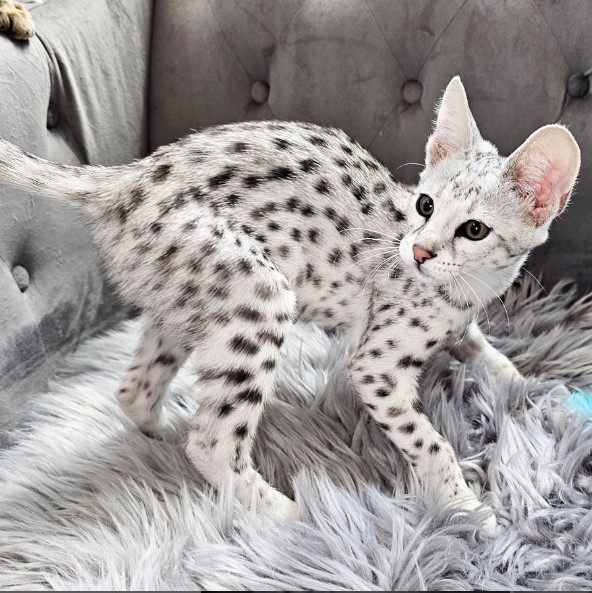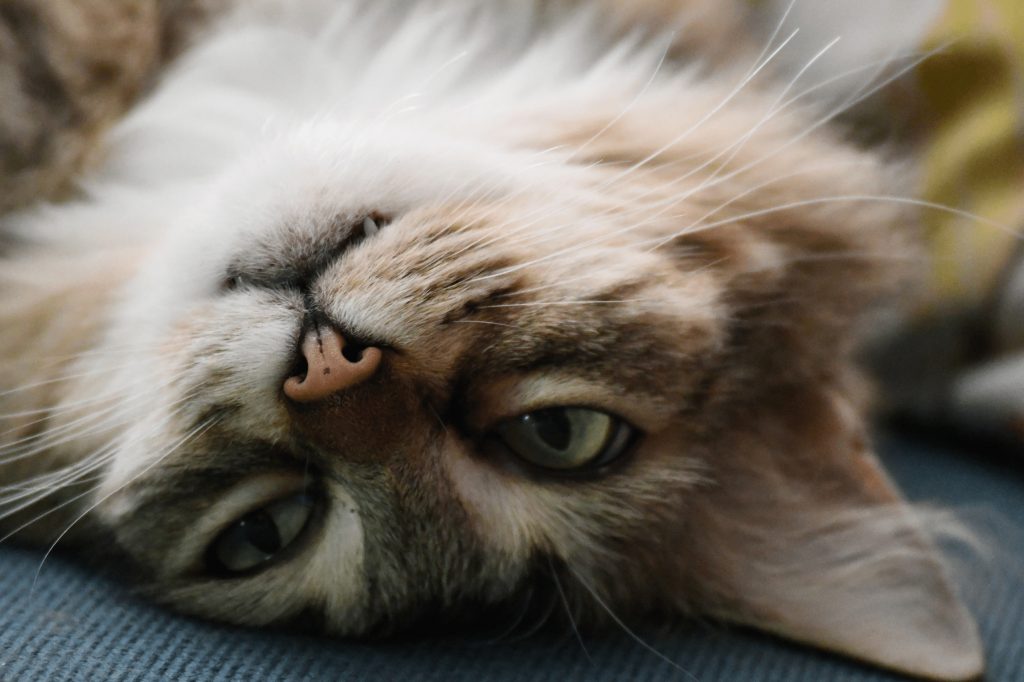Why Do Cats Jump on Your Back?

Cats, those enigmatic and entertaining creatures, never fail to surprise us with their quirky behaviors. One of the most amusing habits they possess is jumping on our backs. It can be a startling or funny experience, but have you ever wondered why they do it? In this article, we’ll take a closer look at the fascinating world of feline behavior to unravel the mystery behind this peculiar action.
Reasons why cats jump on your back
Cats have their own reasons for pouncing on your back, and understanding these motivations can deepen your bond with your feline companion. Firstly, cats are born with playful instincts that drive them to engage in physical activities. When they jump on your back, it’s their way of initiating a fun and interactive play session. They see you as their playmate and your back as a perfect launching pad for their energetic antics.
Secondly Reasons, cats are naturally curious explorers. Jumping on your back allows them to gain a new perspective on their surroundings. From the elevated position, they can better survey the room, keeping an eye on potential prey (or harmless toys) or simply satisfying their inquisitive nature. Your back becomes a platform for their curious adventures.
Understanding feline behavior
To truly grasp why cats exhibit this behavior, we need to delve into their evolutionary instincts and social dynamics.
Cats are descendants of formidable predators, and their hunting prowess is deeply ingrained in their DNA. Jumping and climbing are essential skills for stalking prey and maneuvering through their environment. So when they leap onto your back, it’s a manifestation of their inherent instinct to conquer their surroundings.
Additionally, cats have a hierarchical social structure, even within their domestic lives. When they jump on your back, it can be a way for them to assert dominance or establish their position within the family. By physically positioning themselves above you, they are subtly communicating their status in the household pecking order.
Also Read: Why Do Cats Meow After They Poop?
How to Stop a Cat from Jumping on your back
Stopping a cat from jumping on your back requires a combination of training, redirection, and providing appropriate outlets for their energy. Here are some effective strategies to help discourage this behavior:
1. Provide alternative outlets: Cats need an outlet for their natural instincts, such as climbing, scratching, and playing. Set up a designated space with a tall cat tree or shelves where they can climb and explore. Offer interactive toys, puzzle feeders, and scratching posts to redirect their energy and provide mental stimulation.
2. Reinforce positive behavior: Reward your cat when they engage in desired behaviors, such as using its scratching post or playing with appropriate toys. Positive reinforcement, such as treats, praise, or gentle petting, helps them associate good behavior with positive outcomes.
3. Use deterrents: Place double-sided tape, aluminum foil, or plastic mats on surfaces where your cat typically jumps from. Cats dislike sticky or unpredictable textures, which can discourage them from leaping onto your back. Additionally, you can use pet-safe deterrent sprays with scents that cats find unpleasant.
4. Redirect their attention: When you notice your cat showing signs of wanting to jump on your back, redirect their attention to an alternative activity or toy. Engage them in interactive play sessions using toys like feather wands or laser pointers to redirect their focus and energy away from your back.
5. Train with positive reinforcement: Consider clicker training to teach your cat alternative behaviors. Use a clicker to mark desired actions, such as sitting or using designated scratching posts, and reward them with treats or praise. With consistency and repetition, they will learn to associate these behaviors with positive reinforcement.
6. Set boundaries: Establish clear boundaries by gently and calmly discouraging the behavior when your cat attempts to jump on your back. Use a firm “no” or a gentle redirection with your hand or a toy. Avoid harsh punishments or negative reinforcement, as it can damage the trust and bond you share with your cat.
7. Create a calm environment: Cats may jump on your back to seek attention or play. Ensure they receive regular interactive play sessions to satisfy their need for engagement. Additionally, create a calm and enriching environment with hiding spots, comfortable resting areas, and a consistent routine to minimize their desire for attention-seeking behaviors.
8. Seek professional advice: If your cat’s back-jumping behavior persists or becomes problematic, it’s advisable to consult with a veterinarian or animal behaviorist. They can evaluate the situation, provide tailored guidance, and address any underlying issues that may be contributing to the behavior.
Remember, each cat is unique, and it may take time and patience to modify its behavior successfully. Consistency, positive reinforcement, and providing appropriate outlets for their instincts are key to discouraging jumping on your back and fostering a harmonious relationship with your feline companion.
Playful instincts: Embracing your cat’s desire to jump on your back
Playtime is an essential aspect of a cat’s physical and mental well-being. It’s not surprising that they view jumping on your back as a playful activity. It’s an invitation for you to engage in interactive play and spend quality time together.
Embrace their desire for play by providing them with appropriate toys and games that redirect their playful energy away from jumping on your back. Interactive toys, feather wands, or puzzle feeders can offer them the stimulation they crave.
Also Read: How to Tell if Your Cat Has More Kittens Inside
Establishing dominance
Cats are independent creatures, but they also thrive in a structured social order. Back-jumping can be their way of asserting dominance and claiming their place in the family hierarchy. While it may seem amusing or confusing, it’s important to provide alternative outlets for their dominant behavior.
Ensure they have scratching posts, climbing trees, and designated spaces where they can exert their authority without jumping on your back. Creating a cat-friendly environment helps them fulfill their need for hierarchy while maintaining harmony in their relationship.
Seeking attention
Cats have a knack for captivating our attention, and jumping on your back is undoubtedly an attention-seeking behavior. By springing onto your back, they instantly grab your focus and affection. It’s their way of saying, “Hey, look at me!” While it’s endearing, it’s important to establish boundaries.
Acknowledge their presence and provide alternative forms of attention, such as interactive toys, engaging play sessions, or designated cuddle time. This way, you can shower them with love and meet their need for interaction without encouraging back-jumping.
Bonding and affection: Jumping into your heart
Believe it or not, jumping on your back can also be a sign of trust and closeness. Cats often associate this action with positive experiences and affectionate interactions.
It’s their way of showing that they feel comfortable and safe with you. To further strengthen your bond, practice gentle handling, and provide positive reinforcement during your interactions. This will help solidify the trust between you and reduce the need for back-jumping as a means of seeking closeness.
Recognizing behavioral issues: Seeking professional guidance
In rare cases, back-jumping behavior can become excessive, aggressive, or potentially harmful. If your attempts to redirect or modify the behavior prove unsuccessful, it’s crucial to seek professional advice. Consult with a veterinarian or animal behaviorist who can provide expert guidance tailored to your cat’s specific needs. They will help address any underlying issues and ensure the well-being of both you and your feline companion.
Why Does Your Cat Jump on Your Back and Bite You?
If you’re a cat owner, you may have experienced your feline friend’s playful antics, which can sometimes involve jumping on your back and playfully biting you. While it may seem puzzling or even frustrating at times, this behavior is quite common among cats.
Cats are natural hunters, and their instinctual behaviors often manifest through play. Jumping on your back and playfully biting can be seen as an expression of their predatory nature. To them, it’s an exciting game, resembling how they would pounce on their prey in the wild.
However, it’s important to establish boundaries and redirect this behavior to appropriate toys to prevent any unintentional harm.
The Elevated Perch: Why Cats Love Jumping on Your Shoulders
Have you ever wondered why your cat loves to jump on your shoulders? This behavior is typically seen as a sign of trust and affection. Cats are known for their curiosity and desire for a high vantage point, which allows them to observe their surroundings more effectively.
By jumping on your shoulders, they gain an elevated position, giving them a sense of security and control. Additionally, being on your shoulders puts them in close proximity to your face, allowing them to bond with you and share their scent by rubbing their cheeks against your skin. It’s their way of showing that they feel comfortable and close to you.
Why Cats Sit on Your Back When You Sleep
If you’ve ever woken up to find your cat perched on your back while you were sleeping, you’re not alone. Cats are notorious for seeking out cozy and warm spots, and your back provides the perfect combination of both.
Your body generates heat, and cats instinctively seek out warmth for comfort. By settling on your back, they can bask in your body heat and find a snug spot to rest.
Additionally, cats are social animals and enjoy being close to their human companions. Sitting on your back during sleep allows them to be near you, providing them with a sense of security and companionship. However, if this behavior disturbs your sleep, you may consider providing alternative comfortable sleeping spots for your cat to avoid any nighttime disturbances.
Conclusion
The mystery behind why cats jump on our backs is rooted in their playful instincts, curiosity, social dynamics, and desire for attention. By understanding these motivations, we can strengthen our bond with our feline friends.
Embrace their natural tendencies, redirect their energy, and provide them with outlets for play, exploration, and hierarchy. With patience, consistency, and love, you can create a harmonious environment where your cat thrives, and your back remains a safe sanctuary from their pouncing escapades.





helloI like your writing very so much proportion we keep up a correspondence extra approximately your post on AOL I need an expert in this space to unravel my problem May be that is you Taking a look forward to see you
Somebody essentially lend a hand to make significantly posts I might state That is the very first time I frequented your web page and up to now I surprised with the research you made to create this particular put up amazing Excellent job
Hi Neat post Theres an issue together with your web site in internet explorer may test this IE still is the marketplace chief and a good component of people will pass over your fantastic writing due to this problem